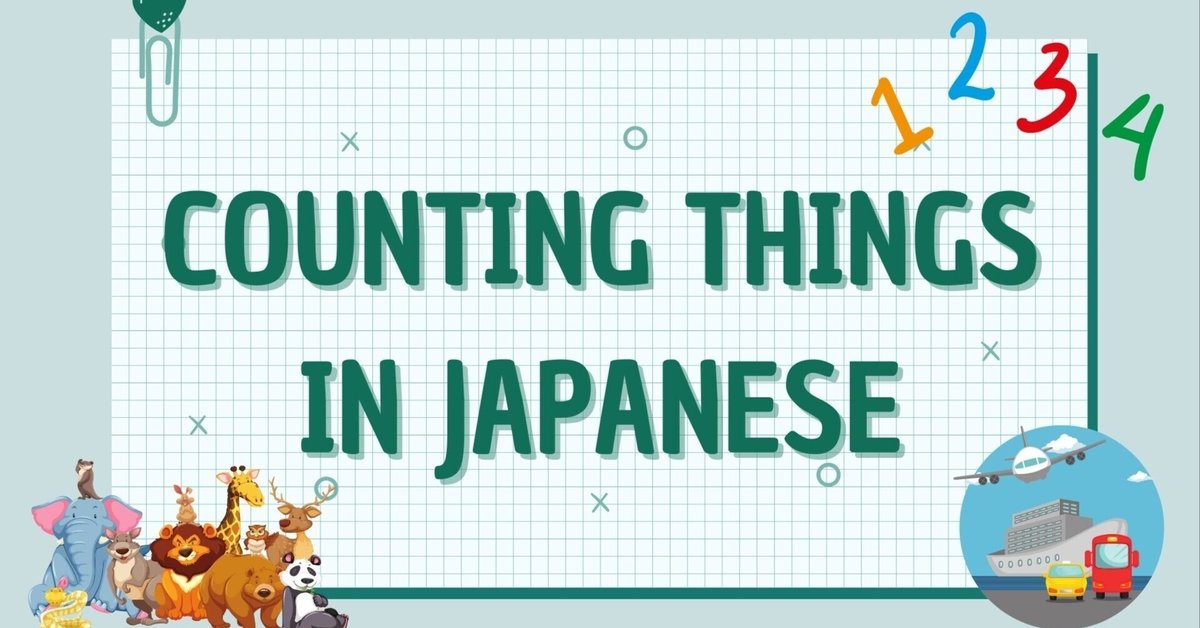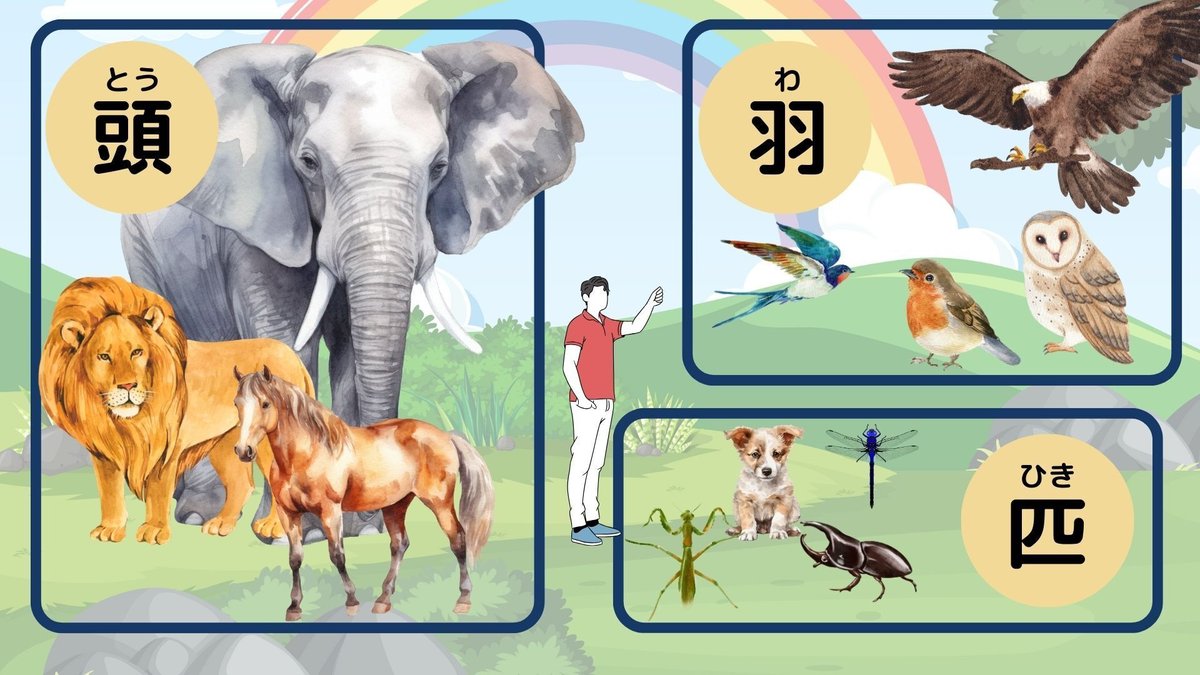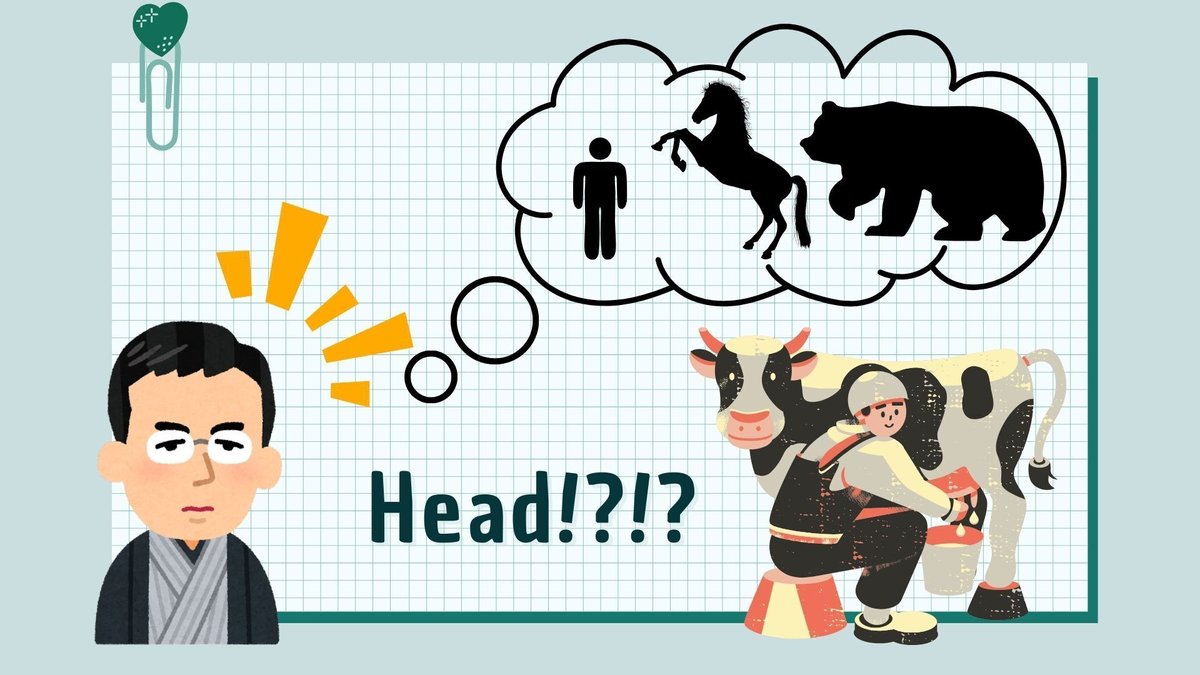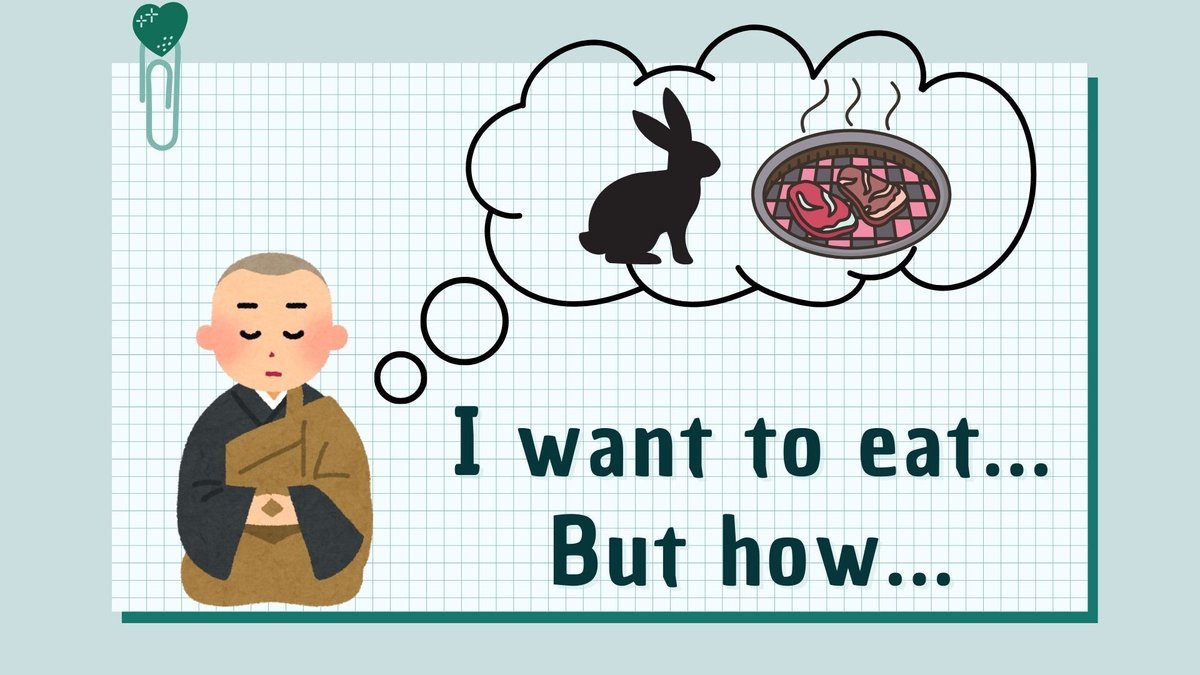
#17 Counting Things in Japanese Part1
Counting words, known as counters, are a fascinating part of the Japanese language. While there are fewer types compared to Japanese or Chinese, even English has a few counters!
a slice of pizza ピザ 一切れ(ひときれ)
a piece of cake ケーキ 一切れ(ひときれ)
a glass of water 水 一杯(いっぱい)
a cup of coffee コーヒー 一杯(いっぱい)
a sheet of paper 紙 一枚(いちまい)
a pair of chopsticks お箸 一膳(いちぜん)
As you study Japanese, you’ll often come across these counters used to count different objects. For example, 人(にん) is used to count people, while 台(だい) is used for machines like smartphones and cars.
Instead of relying solely on rote memorisation, learning counters can become much easier when you associate them with visual images or fun trivia. That’s why in this article, we’ll take a closer look at the world of Japanese counters, focusing on how to count things using visuals and some interesting facts.
Counting Animals: 頭 (とう), 匹 (ひき), and 羽 (わ)
The counters 頭 (とう), 匹 (ひき), and 羽 (わ) are probably familiar to many Japanese learners. These three are enough to cover most situations when counting animals. While there are some obscure animal counters, even native speakers rarely use them in daily life. So you only need to learn them if you’re really curious!
Let’s take a closer look, starting with a visual comparison to help things click.
The Basics
• 頭 (とう) and 匹 (ひき) are used for animals that aren’t birds.
• 羽 (わ) is specifically for birds.
The difference between 頭 (とう) and 匹 (ひき)
The choice depends on the size of the animal compared to a human. If the animal is roughly human-sized like a horse or cow, you use 頭 (とう). For smaller animals, 匹 (ひき) is the norm.
That said, there’s no strict definition. It’s a bit subjective! If you’re not sure, just go with your instinct.

Trivia No.1 The History Behind Counting Large Animals with “頭 (とう)”
Interestingly, the practice of counting large animals with 頭 (とう) in Japanese is surprisingly recent. It only dates back to the Meiji era, about 150 years ago, long after the age of the samurai had ended. Before then, even large animals like cows and horses were consistently counted using 匹 (ひき).
So, why did the system change? Why complicate things by introducing a separate counter? If you’re a Japanese learner, you might be thinking, “Why didn’t they just stick with 匹? It was simpler!”😅
To understand the reason, we need to look at the global and domestic situation of Japan in the late 19th century.
In the late 19th century, Western powers dominated the world through imperialism, colonising nations with military and economic force. Alarmed by this, especially as neighbouring China fell under Western influence, Japan rushed to modernise. The government actively promoted Westernisation, believing it was the only way for Japan to be seen as an equal on the global stage.
One aspect of this Westernisation included learning English, which brought with it exposure to Western counting systems. In English, large livestock such as cows and horses are counted using the word head, as in:
“There are thirty head of cattle on the farm.”

Japanese people at the time realised that using 頭 (とう) to count large animals like horses and cows could align Japanese with this English practice. This reasoning extended to other large animals, leading to the adoption of 頭 as the standard counter for all animals of similar size.
How about now? Does this explanation help you make sense of why the distinction between 頭 (とう) and 匹 (ひき) exists?🤭
Trivia No.2 How Do You Count Rabbits in Japanese?
To cut to the chase, rabbits are counted using 羽 (わ) in Japanese. Wait a second, what? That makes no sense! Sure, flightless birds like ostriches, penguins, or kiwis are still birds, so counting them with 羽 is understandable. But rabbits? Come on!
You’re probably thinking the same thing, right? 🤭 Yet, it’s true. Japanese people really do count rabbits using 羽 (わ). So, why on earth would they do that? There are a few theories, but let’s explore the most popular one.
The Buddhist Monk Theory
One widely accepted explanation is that Buddhist monks started this practice. According to Buddhist rules, eating the meat of four-legged animals was forbidden. However, monks are human, and sometimes they just couldn’t resist the temptation of meat.
To get around the rule, they decided to classify rabbits as birds. By labelling them as creatures with “wings” and counting them with 羽, they could justify eating rabbit meat while technically adhering to the rules.

This theory is fascinating because it reflects how human desires and creativity can shape cultural practices. Whether or not it’s true, it’s a story that captures the unique quirks of language and history!
Summary
Exploring the history of counters can be surprisingly fun. After all, whether it’s vocabulary or grammar, language is something created by humans and there’s almost always a reason behind it. By uncovering these reasons, we can catch a glimpse of how people in the past thought and lived. I personally find it fascinating and often look up the origins of words or expressions just for fun.
While knowing an extensive list of counters might not directly improve your conversational skills in Japanese, I hope this article inspires you to dive deeper into the language. Sometimes, little cultural insights like these can give you a fresh perspective and make learning even more enjoyable. 😆
Thank you for reading!
